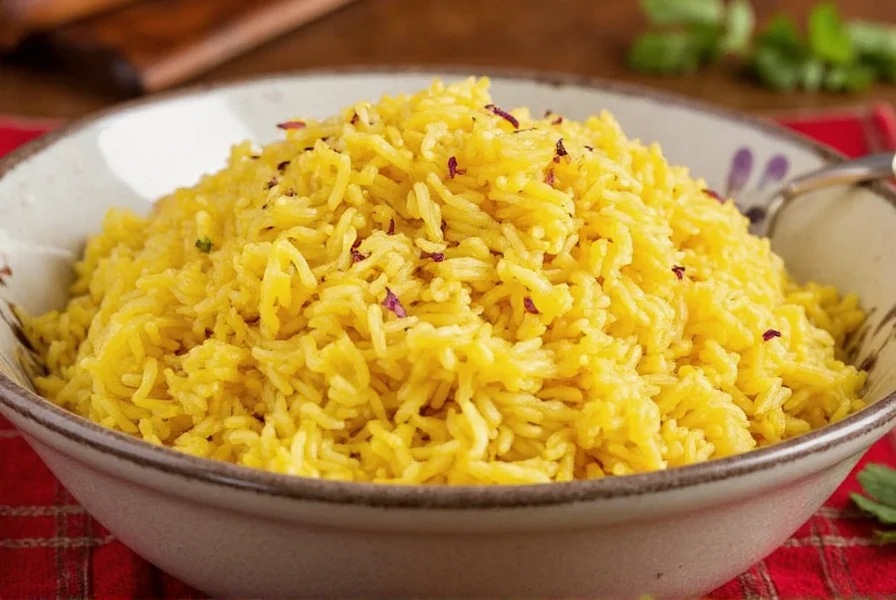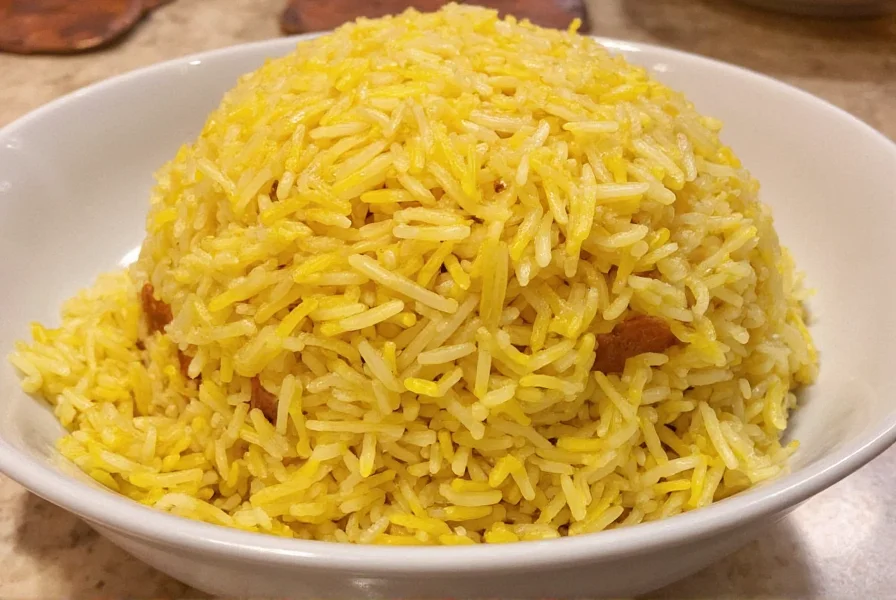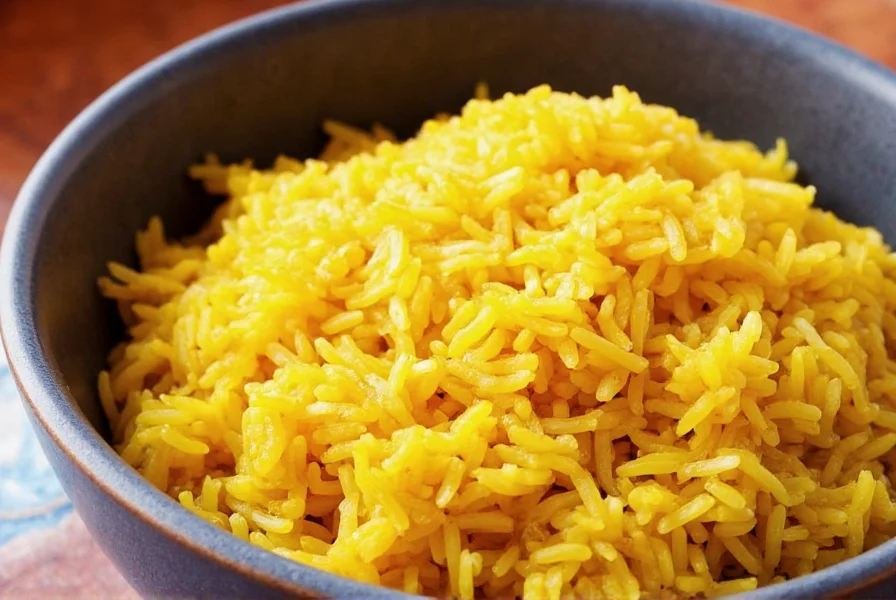Persian saffron rice represents one of Iran's most cherished culinary traditions, transcending simple sustenance to become a cultural symbol of hospitality and celebration. This iconic dish features long-grain basmati rice transformed through careful preparation and the addition of precious saffron threads, creating a visually stunning and aromatic centerpiece for Persian meals. The distinctive golden color and subtle floral notes distinguish authentic Persian saffron rice from ordinary rice preparations, while the coveted tahdig—the crispy, caramelized crust that forms at the bottom of the pot—represents the pinnacle of proper technique.
The Cultural Significance of Saffron Rice in Iran
In Persian culture, saffron rice (often called “Chelow” when served plain or “Tahdig” when referring specifically to the crispy bottom layer) holds profound cultural importance. Families traditionally prepare this dish for special occasions including Nowruz (Persian New Year), weddings, and religious celebrations. The labor-intensive preparation demonstrates respect for guests, as the process requires significant time and attention to detail. Saffron itself carries symbolic meaning in Iranian culture, representing sunshine, joy, and prosperity—qualities reflected in the golden hue of properly prepared saffron rice.
Essential Components of Authentic Persian Saffron Rice
Creating genuine Persian saffron rice requires attention to three critical elements: rice selection, saffron quality, and cooking technique. Iranian chefs typically use high-quality imported basmati rice from India or domestically grown varieties like “Domsiah” known for their long grains and fragrance. The saffron must be pure, deep red threads without yellow styles, preferably from Iran's Khorasan region which produces approximately 90% of the world's saffron. Understanding how to make Persian saffron rice properly begins with these foundational ingredients.
| Ingredient | Quality Characteristics | Measurement for 4 Servings |
|---|---|---|
| Basmati rice | Long-grain, aged at least one year | 2 cups (400g) |
| Saffron threads | Pure red threads, no yellow styles | 15-20 threads |
| Water | Filtered or spring water preferred | 4 cups |
| Salt | Sea salt or kosher salt | 2 tablespoons |
| Butter or oil | Unsalted butter for traditional preparation | 3 tablespoons |
Step-by-Step Preparation Guide
The authentic Persian saffron rice recipe follows a precise methodology developed over centuries. Begin by soaking the rice in heavily salted water for at least two hours, which removes excess starch and prevents mushiness. Meanwhile, prepare the saffron infusion by grinding 15-20 threads with a pinch of sugar, then dissolving in two tablespoons of hot water. This critical step maximizes saffron's flavor and color extraction—a technique many home cooks overlook when attempting how to make Persian saffron rice.
After soaking, parboil the rice in abundant salted water until semi-cooked (al dente), approximately 8-10 minutes. Drain thoroughly, then layer the rice in a heavy-bottomed pot (traditionally a “degheg”) with alternating layers of plain and saffron-infused rice. The bottom layer should include a mixture of rice, melted butter, and additional saffron water to create the signature tahdig. Proper heat management during the steaming phase—starting high then reducing to low—creates the perfect texture contrast between fluffy upper grains and crispy bottom crust.

Avoiding Common Preparation Mistakes
Many home cooks struggle with making tahdig with saffron due to several preventable errors. Using insufficient soaking time results in uneven cooking and broken grains. Adding saffron directly to boiling water rather than preparing a proper infusion wastes this expensive spice. Incorrect heat management—either too high throughout or insufficient initial high heat—prevents proper tahdig formation. Additionally, disturbing the rice during cooking releases steam and disrupts the delicate crisping process.
The best rice for Persian saffron rice must have specific characteristics: long grains that remain separate when cooked, sufficient starch content to create tahdig, and aromatic properties that complement saffron. While basmati remains the standard, some Persian chefs prefer domestic Iranian varieties like “Gerde” or “Tarom” for their superior texture in traditional preparations.
Serving Traditions and Accompaniments
In authentic Persian dining, saffron rice serves as both a side dish and centerpiece. The tahdig is carefully inverted onto a serving platter to showcase the golden crust, with the fluffy saffron-infused rice arranged around it. Traditional accompaniments include grilled meats (especially chicken and lamb), stewed dishes (khoresht), and fresh herbs with feta cheese. The Persian saffron rice cultural significance extends to serving rituals—the host typically serves the tahdig first as a gesture of honor to guests.

Storage and Reheating Techniques
Properly storing Persian saffron rice requires attention to maintain its distinctive qualities. Cool the rice completely before refrigeration, and store in an airtight container for up to three days. When reheating, the traditional method involves steaming rather than microwaving to preserve texture. Sprinkle with a few drops of water, cover with a damp cloth, and steam over low heat for 10-15 minutes. This technique revives the fluffy texture while maintaining the delicate saffron aroma—a crucial consideration for anyone following an authentic Persian saffron rice recipe.
Frequently Asked Questions
What makes Persian saffron rice different from regular rice dishes?
Persian saffron rice features specific preparation techniques including extended soaking, parboiling, and steaming that create distinct textural layers. The addition of premium saffron provides a unique floral aroma and golden color not found in ordinary rice dishes. Most significantly, the prized tahdig—the crispy, caramelized crust formed at the bottom of the pot—represents a culinary element absent from standard rice preparations.
How can I achieve perfect tahdig with saffron rice?
Creating perfect tahdig requires proper heat management: start with high heat for 10-15 minutes to form the crust, then reduce to low heat for steaming. Use a heavy-bottomed pot with a tight-fitting lid, and include a mixture of rice, butter, and saffron water at the bottom layer. Avoid disturbing the rice during cooking, and let it rest for 10 minutes after cooking before attempting to remove the tahdig. The quality of your pot significantly impacts tahdig formation—traditional Persian clay pots yield the best results.
Can I substitute other spices for saffron in Persian rice?
While some home cooks attempt substitutions, authentic Persian saffron rice requires genuine saffron threads. Turmeric creates a similar yellow color but lacks saffron's distinctive floral aroma and complex flavor profile. Saffron's unique chemical composition (including crocin, picrocrocin, and safranal) cannot be replicated by other spices. For traditional Persian cuisine, saffron remains irreplaceable—its use in rice preparation dates back over 3,000 years in Iranian culinary history.
Why is my Persian saffron rice turning out mushy?
Mushy Persian saffron rice typically results from insufficient soaking time, overcooking during the parboiling stage, or using the wrong rice variety. Authentic preparation requires soaking the rice for at least two hours to remove excess starch. The parboiling stage should only cook the rice to al dente—approximately 8-10 minutes—as the rice will continue cooking during the steaming phase. Using aged basmati rice (at least one year old) with proper starch content is essential for achieving separate, fluffy grains.











 浙公网安备
33010002000092号
浙公网安备
33010002000092号 浙B2-20120091-4
浙B2-20120091-4